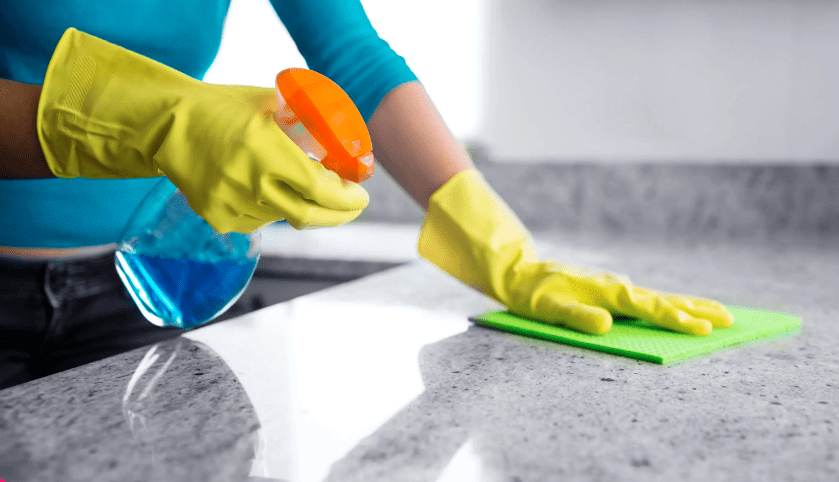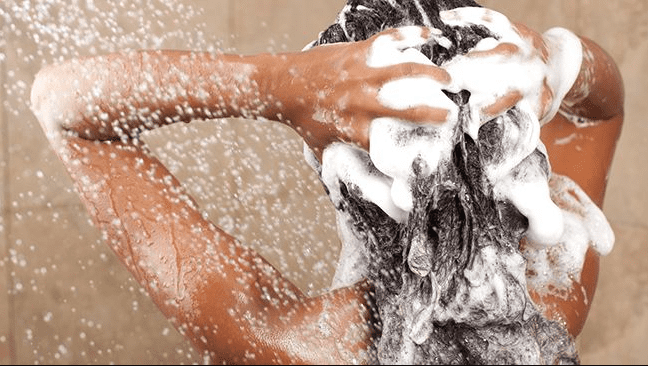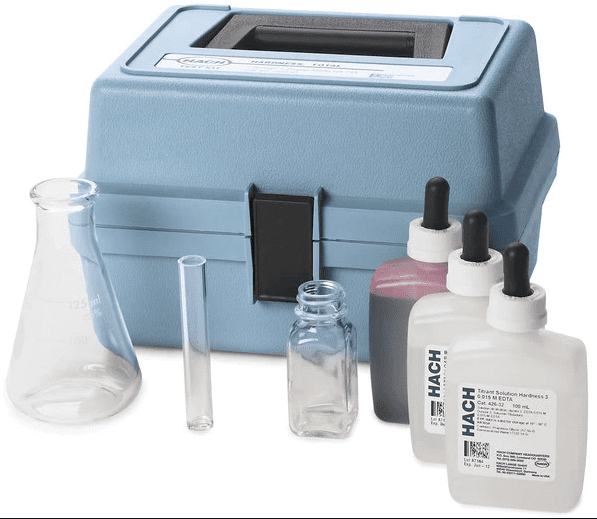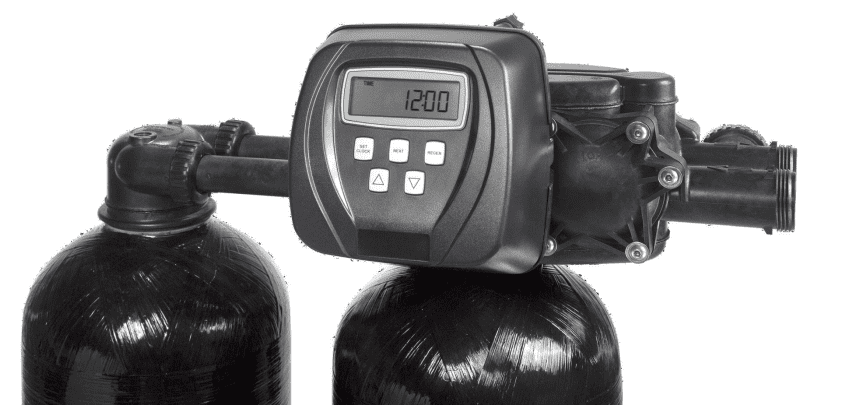How Soft and Hard Water Affect Cleaning and Disinfecting Surfaces?
If you are someone who places a high value on order and cleanliness, you will be able to detect at a glance whether or not a certain surface in your home has been cleaned. If you have well water you will be able to pick out the hard water stains very easily. However, despite our best efforts, some germs and dirt are not visible to the naked eye. This is the case even when we clean thoroughly.
We give water treatment a lot of thought since, the majority of the time, the toxins that aren’t visible but are still present in our supply of drinking water are the ones that are most likely to result in serious issues. This is also true for the microscopic pollutants that can be discovered on various surfaces present in the home. Because we clean these surfaces with water, the quality of our water is an extremely important consideration.
At present, we are worried about the proliferation of dangerous diseases such as the influenza virus and the coronavirus. Another problem is the seemingly never-ending number of cases of water-related ailments. Therefore, it is necessary to acquire the knowledge necessary to recognize potential health hazards and eliminate them from your living environment, whether that space is a restroom, kitchen, restaurant, hospital, or school. To maintain a healthy atmosphere, you should disinfect and clean the surfaces around you regularly.

Disinfecting Versus Cleaning Surfaces
Separate steps are required for the procedures of disinfection and cleaning. Cleaning is a technique that involves using detergent or soap in conjunction with water to remove grime, filth, and some pathogens from surfaces. Cleaning does not get rid of all bacteria. It is also important to point out that hard water will still leave hard water stains. The process of disinfecting a surface involves destroying the capacity of germs, bacteria, and other pathogens to multiply as well as removing or killing any that may be present.
In essence, it means making sure that a surface is clean and devoid of bacteria and germs that might cause illness. You may disinfect surfaces in your home with everyday chemicals like Lysol spray, Clorox bleach, and a variety of additional products that contain these and similar compounds.
The process of disinfection has to follow the cleaning process to be effective. Before you can disinfect a surface, you will first need to make sure it is clean. You cannot use a disinfectant spray on a surface that is unclean since the spray will not eliminate all of the germs. Because of the grime and dirt that collects on the surface, the sanitizer will not be able to reach all of the germs, bacteria, and viruses.
After the surface has been washed with detergents and soaps that are effective, it should be disinfected with common household chemicals that can be purchased at your neighbourhood retailer. Because of this, any common disease-causing pathogens that are still on the surface will be eliminated. In the alphabet, the letter ‘c’ comes before the letter ‘d.’ You can use this to help you remember how to complete the process.
The operations of cleaning and disinfection can be highly dangerous if they are not carried out correctly. Certain items should not come into contact with the human body under any circumstances. Don’t forget to give the labels a thorough read. Remember to wash your hands well after completing each step of the process because you do not want to accidentally swallow any of these substances.

How Do Hard Water Stains Occur?
When comparing hard water stains vs soft water staining, soft water makes it much simpler to clean the house. This is because the hard water latter contains hard minerals, such as magnesium and calcium, which make soap and detergent less effective, causing the scale to build up and leave stains and residue (commonly referred to as water spots or hard water stains) on surfaces. You can think of those minerals as being comparable to very little grains of sand that are carried through your water. When the grains come into touch with the soap, a reaction takes place that causes the formation of a sticky chemical that causes globs of coagulated soap to gather together. We call these globs “soap scum”.
The soap scum is a bothersome sight to stare at for too long. It also clings to surfaces and conceals bacteria and germs, and it does both of those things. According to the findings of some researchers, soap scum provides an ideal environment for the growth of germs and bacteria.
According to a microbiologist named Norman Pace who works at the University of Colorado, soap scum is teeming with bacterial life. He goes on to explain that when you take a shower, bacteria-filled aerosols surround you and immerse you completely. Even if the scenario might not be harmful in and of itself, things could take a turn for the worse if you have a compromised immune system or a cut that is not properly protected.
On the other hand, products can be completely cleaned using a sudsy and foamy lather produced by soft water. When you use soft water, you won’t have to worry about a buildup of soap scum like you would with hard water. In addition, because soft water does not contain the minute mineral particles that might cling to soap and diminish its effectiveness, using soft water will require you to use less soap.
When you are cleaning, you want to ensure that you get the most out of the soap and detergent that you use to cleanse your home. To protect oneself from infections like the influenza virus and other viruses that can live on surfaces for an extended period, you need to clean effectively.
You can also use soap as a disinfectant if you don’t have any other chemicals on hand. The effectiveness of soap as a disinfectant can be attributed to a number of its distinctive features. A virus can be rendered inactive by soap because it dissolves the fat membrane that surrounds the virus, causing it to collapse like a house of cards. Alcohol is found in a variety of creams, gels, wipes, and other types of disinfectants. The microorganisms’ metabolism is disrupted as a result of the alcohol since it causes the cell wall to be destroyed.
When it comes to cleaning a surface, using warm water and soap is the most effective combination. The evidence shown here is sufficient to establish this. When it comes to sterilising different types of surfaces, soft water is the most effective choice. This is since using hard water on many surfaces will prevent disinfection from taking place.
Disinfectants are severely impacted when organic stuff is present. As an illustration, chlorine, and iodophor are two chemicals that are extremely sensitive to organic soil. The efficiency of disinfectants will be hampered further by the presence of minerals and other chemicals that are typical of hard water.
You should be aware that the minerals and other substances that can be found in hard water are detrimental to the cleaning and disinfection processes in your home. To combat the unseen grime that is on your surfaces, you should use soft water.

High-Iron Water and Bleach
The processes of cleansing and disinfection are not just influenced by the minerals magnesium and calcium. Other components also play a role. You may find more hard water stains on surfaces all around your living space if you reside in rural locations or if you have the impression that you are using more bleach. Bleach and water with high iron content, however, both contribute to aesthetic issues.
Iron can be found in water in two different forms: soluble iron, which is not visible, and solid iron, which can be observed in the form of a particle. Both of these types of irons are to blame for the unsightly orange stains that can be found on various surfaces in the kitchen and bathroom. Because the water in its immediate vicinity needs to evaporate before the iron in it can become oxidized, staining a surface with soluble iron takes a little bit more time.
It has come to light that bleach possesses naturally occurring oxidizing characteristics. The bleach products will cause the iron in your water to react, which will result in the formation of solid particles. When you clean your surfaces, especially your sinks, you will discover stains that look like rust on those surfaces. To protect your home against stains caused by iron, you will require a water filtration system capable of removing the iron in your home. In cases of very light iron a water softener will remove it, but for anything over 1 ppm (parts per million), you will need a dedicated iron remover along with the water softener. The other advantage of having an iron remover is it will also protect the water-softener resin bed from becoming fouled and no longer working.
This is an improved and more long-term solution to the problem of iron concentration in the water. If you want to avoid having to scrub stains even after they have been cleaned, this is the ideal solution for you. Filtration will also remove the minerals that cause hardness, leaving your water soft and easy to use after the process is complete.
Keep in mind that using soft water will make it easier for you to clean and disinfect your home, but you should not count on it to keep you safe from potentially dangerous germs. If you want an efficient water purification system, you can call Affordable Water Treatments of Manitoba or go to their website www.affordablewatertreatments.com.

Effects Of Hard Water Stains on Laundry?
When you pull your clean clothing out of the washing machine, you may notice that they don’t look or feel as though they’ve been thoroughly washed. It’s possible that your towels may become stiff, and that the rest of your garments will turn grey. This is a problem that occurs frequently in a great number of homes as a result of using hard water.
Users of hard water can run into a variety of issues, including the following:
- Laundry in shades of grey and yellow
- A fluffy cloth that has become rigid
- The appearance of grey and white streaks on colorful fabric as a result of wear and tear on clothing
Hard water is characterized by the presence of dissolved compounds of hardness minerals, such as magnesium and calcium, which do not combine successfully with detergents. Laundry suffers a greater degree of damage when washed in water that contains a high concentration of hard minerals.
According to the findings of a study that was carried out at Purdue University, washing your clothes in hard water causes them to wear out 15% more quickly than washing them in soft water does.
It is required for the cleaning chemical to combine properly with water for it to be effective, but calcium and magnesium ions prevent this from happening. The ions will create a link with the soap, which will result in the formation of a sticky curd that will attach itself to the fibres in the fabric. Because the curd attracts dirt, the clothing will end up even dirtier than they were before you started washing them. When you do your laundry with hard water consistently, the residue left behind by the hard minerals and detergent will cause your white clothes to go yellow or grey. Streaks of grey or white can occasionally be seen on colorful laundry.
Because of the accumulation of this residue, the laundry will start to have a crusty and rigid texture, which will reduce the fabric’s pliability. Due to a lack of flexibility, there will be more friction, which will result in unnecessary wear and tear on your clothing.
To solve this problem, homeowners are increasing the temperature of the water they use and using more detergent, both of which result in increased costs. At the end of the day, you have an increase in your costs, you have purchased additional detergent, and you still need to replace the clothing that is torn or worn.
The Environmental Protection Agency estimates that a typical family completes approximately 400 loads of laundry throughout the year. Every year, people living in North America generate billions of dollars worth of money for the detergent manufacturing sector. You need to be aware of the fact that a washing machine devotes the vast majority of its available energy to the process of heating water for each load. When it comes to doing laundry, using cold water washing could save a large amount of electricity.
Because of these contributing variables, the annual cost of doing laundry for the typical American home is roughly $500. This price takes into consideration the cost of laundry products as well as the cost of power, and it is simple to lower or adjust.
In addition, there is the potential for extremely negative outcomes if chlorine bleach is combined with hard water. This is because hard water includes iron particles, which, when combined with chlorine, can induce the formation of a substance known as iron oxide, which is just another term for rust. This rust will leave an irremovable stain on any clothing it comes into contact with.
In the investigation, three different washing procedures were applied. Each sample had a different amount of detergent added as well as a different temperature and hardness of the water. In the investigation, nine different stain agents and nine distinct detergents were utilised, three of which were in powder form, and the remaining six were in liquid form.

-
The conclusions of the study:
- The rate of stain removal considerably increases once the hardness of the water has been reduced, and this holds true even when the amount of detergent used and the temperature of the water are both lowered.
- If the water is softened before it is used for washing, the amount of detergent that must be used for the wash will be cut in half. In addition to this, the temperature of the water will be lowered from 100 degrees Fahrenheit to 60 degrees Fahrenheit. We may deduce from this information that decreasing the hardness of the water is a much more effective strategy than increasing the amount of detergent used or the temperature of the water.
- The use of soft water requires less energy for the production of detergent and helps conserve energy by lowering the required water temperature, as well as reducing hard water stains and enhancing the cleanliness of the laundry.
These findings held across the board across all detergents and stain types examined. The findings were utilised in high-efficiency top-loading and front-loading washing machines respectively.
Overall, soft water is beneficial since it improves performance and helps you save money. Because of this, you will have lower expenses associated with your detergents and utility bills. In addition, the colour and texture of your clothing will remain the same throughout its lifespan. In addition to this benefit, using soft water can also lengthen the time that your equipment can function without needing replacement. The use of soft water is the most effective method for cleaning linens, such as sheets, clothing, and towels.
How to Determine if You Have Hard Water
If you notice that your garments are becoming brittle and showing signs of wear and tear, it is time to determine whether or not you have hard water.
To begin with, you will need to have your water tested by a laboratory which can be costly and you may not have access to one, or in Manitoba, you can call Affordable Water Treatments or visit their website (affordablewatertreatments.com) and set up an appointment to have your water tested by a professional. The results of the test will also provide you with information regarding the level of hardness in your water, expressed in parts per million (ppm).
Another option is you may do this straightforward test at home if you do not have access to a laboratory or a professional water treatment company. After placing water in a transparent container and adding a few drops of pure liquid soap, aggressively shaking the container is the next step. If the water at the bottom of the container is clear and a significant number of suds build at the top of the container, then you have soft water. On the other hand, you are working with hard water if there are no suds on the surface of the water and it appears hazy. This straightforward test replicates the outcome of the reaction that takes place in your washing machine whenever you combine liquid soap and water.
Once you have established that you are dealing with hard water, consult an expert in water treatment, in Manitoba, you can call Affordable Water Treatments. The water treatment expert will conduct tests to determine the types of impurities that are present in your water supply. It is important to keep in mind that these contaminants have an effect not just on your laundry but also on the appliances, fixtures, dishes, and surfaces located throughout your home.

Advantages of Using Soft Water:
less brittle hair
no hard water stains
softer, healthier skin
longer lifespans for appliances
minimal to no soap scum buildup in bathrooms
improved washing and cleaning of dishes and laundry
The Benefits of a Water Softener
Consider purchasing a water softener if you want to put an end to the cycle of constantly having to replace your favorite clothes due to wear and tear. Have a conversation with an expert in water treatment about the various available choices; they will provide you with appropriate guidance. Getting a water softener or conditioner is something that the expert will almost certainly recommend to you as a good purchase.
Ion exchange is the method that water softeners utilize to remove hard minerals from water and replace them with sodium and potassium ions. This also sets up the water to run through a drinking water machine such as reverse osmosis. Taking the hardness out of the water does not destroy your filters on the drinking water system as quickly as it would if you had hard water. There is a wide variety of water softeners available on the market today. Others are designed to remove calcium and magnesium ions in addition to iron, manganese, and total dissolved solids (TDS), while others are tailored solely for calcium and magnesium ions.
Water softeners are available in a variety of sizes. In most cases, you will want to choose to get a filtration system for your entire home that will get rid of the hardness in the water before it ever gets into your house. On rare occasions, you may go with a more compact unit that filters and treats the water that goes into your washing machine, or shower. To avoid scales from accumulating in your plumbing and causing damage to your appliances, we strongly suggest investing in a water filter that can treat the water throughout your entire home.

